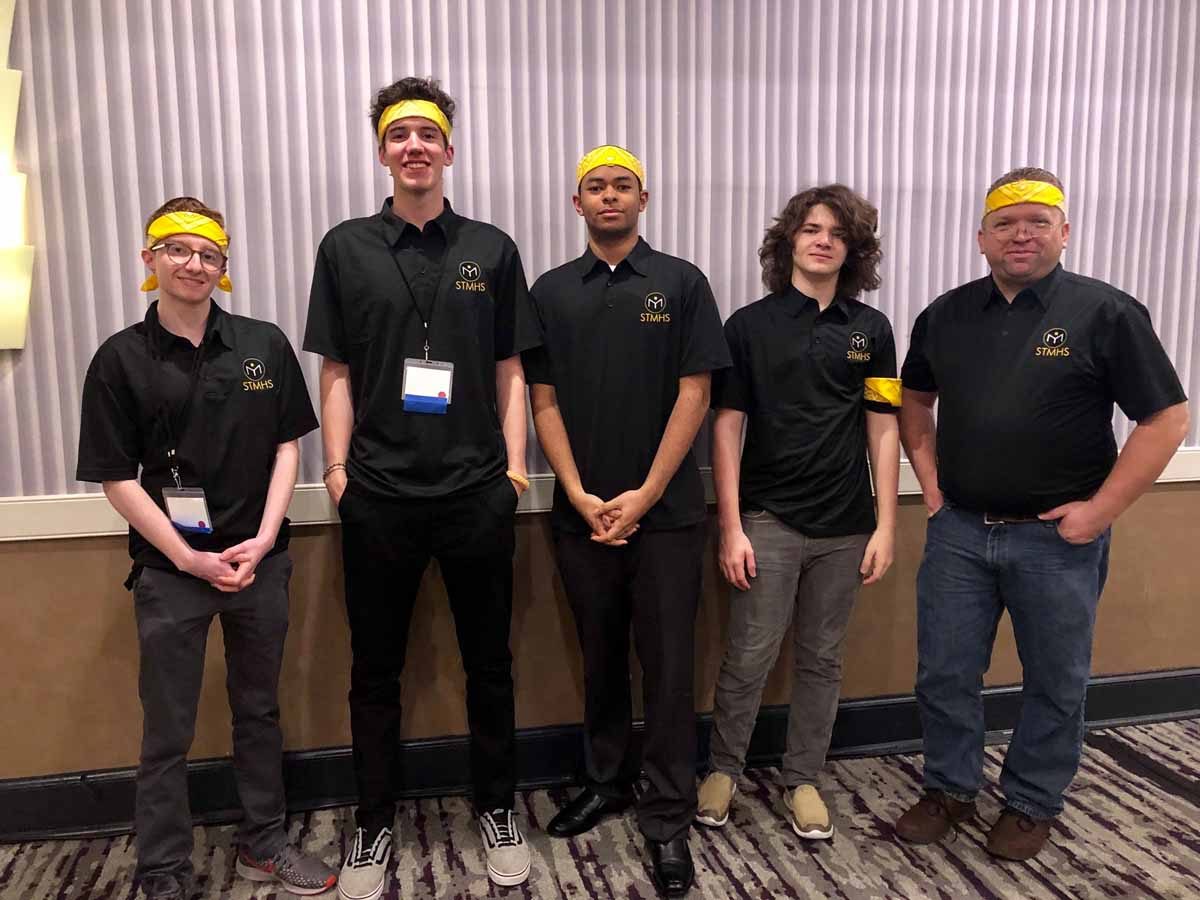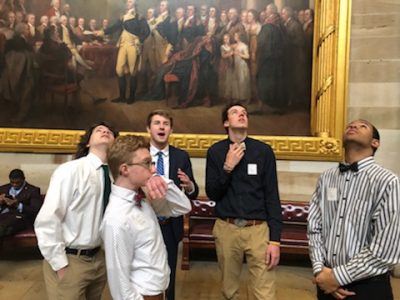
By Judy Benson
Learning marine biology, physics, chemistry and other sciences may have started in the classroom for these five teenagers, but their recent opportunities to showcase what they know in a regional then a national competition gave them a whole new level of enthusiasm for the world of oceanography.
“This experience allowed me to take what we know to a higher degree, and to really get engrossed in the subject,” said Alex Matthews, 17, a junior at the Science and Technology Magnet High School of Southeastern Connecticut. “I’m very, very proud of what we’ve done.”
Their experience also illustrates one of the many ways students are learning about the environment and enhancing their environmental literacy, which is being highlighted during the National Environmental Education Foundation’s National Environmental Education Week celebration April 22 to 26.
Matthews captained the team of classmates Derek Raymond, Christopher Bowens, Michael Reilly and Aidan Desjardins who placed first in the Quahog Bowl ocean science competition at UConn Avery Point on Feb. 4, defeating 15 other teams from Connecticut and Rhode Island. It was the first time a team from the New London magnet school won the regional competition, now in its 22nd year and one of 24 such contests nationwide that are part of the National Ocean Sciences Bowl.
The team had just a little over a month to savor its regional victory and prepare for the next phase – the nationals in Washington, D.C. With Reilly unable to attend, the team of Matthews, Raymond, Bowens and Desjardins headed to the nation’s capital with their coach Charles Mulligan in mid-April for a long weekend. There, they not only participated in the quiz-show style contest, but also took a field trip to the National Oceanic and Atmospheric Administration’s Center for Weather and Climate Prediction and the Capitol building and spent time with fellow competitors.
“I met people from all over the country – Hawaii, Alaska, Arkansas,” said Raymond, also a junior. “It was a lot of fun and we learned a whole lot about the world ocean – the good stuff, the bad stuff, the problems. I’m a sailor and I’ve always been interested in the ocean, but this has just enhanced it.”

The team placed eighth out of the 24 teams at the national contest, a laudable showing for a first-time winner of a regional competition and validation of all the time they spent preparing in after-school meetings and on their own.
The competition tests students on timed multiple choice and longer critical-thinking questions about cross-disciplinary ocean sciences topics. These range from environmental issues and conditions of marine habitats to the technology used to observe the ocean and how ocean observation serves the needs of society.
Diana Payne, education coordinator at Connecticut Sea Grant, is the regional coordinator of the Quahog Bowl and accompanied the team to the national contest.
“These guys wanted to be there from the beginning,” she said. “They were so excited to go and so interested in it. That makes a big difference. This experience really broadened their horizons, and they really made the best of it.”
Coach Mulligan said he believes the main value of the contest is in giving students the chance to apply what they’ve learned outside the classroom and building their self-confidence. It also provides opportunities to meet experts in the marine sciences who serve as judges and volunteers in the competition. He is most proud of the resilience the team showed in the national contest, when they came from 14th place in the first round of double elimination to upset the third-ranked team to finish eighth.
Matthews said that was the most exciting moment of their time in Washington.
“It was incredible,” he said. “It felt really unique and cool.”
Although two of the five team members will be graduating in June, the other three are juniors and plan to compete again next year.
Judy Benson is the communications coordinator at Connecticut Sea Grant.